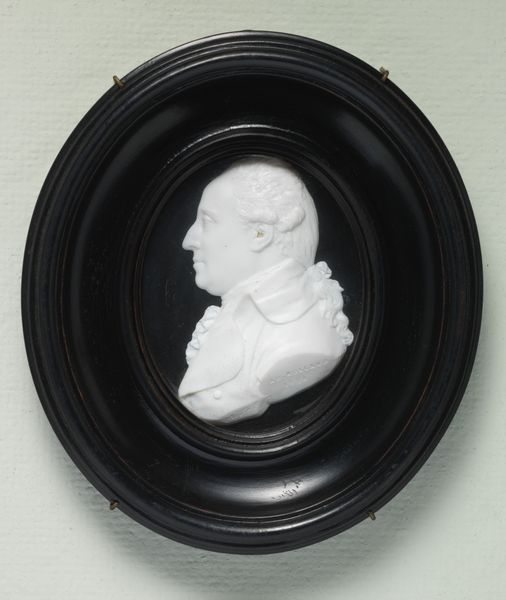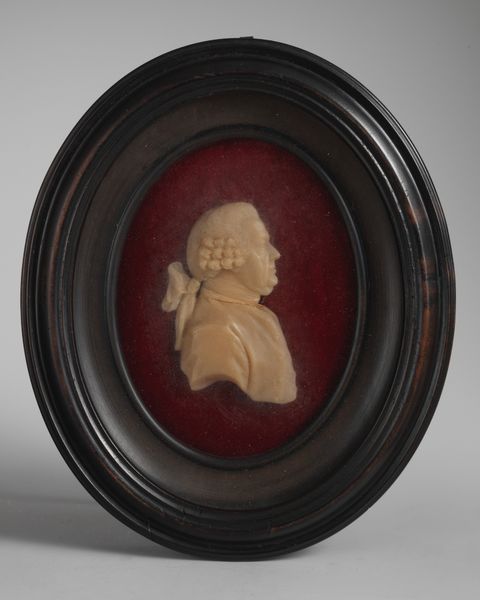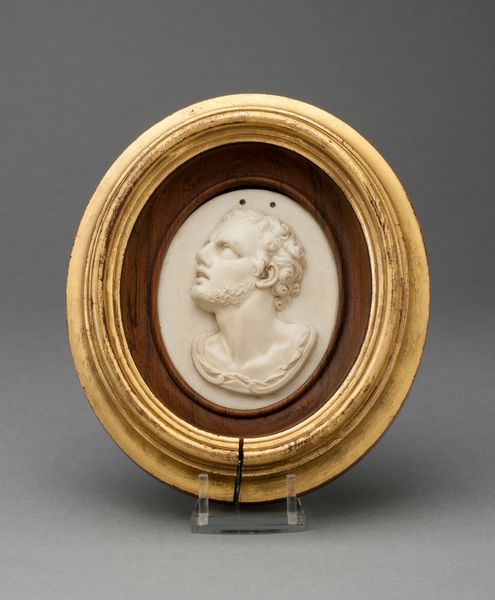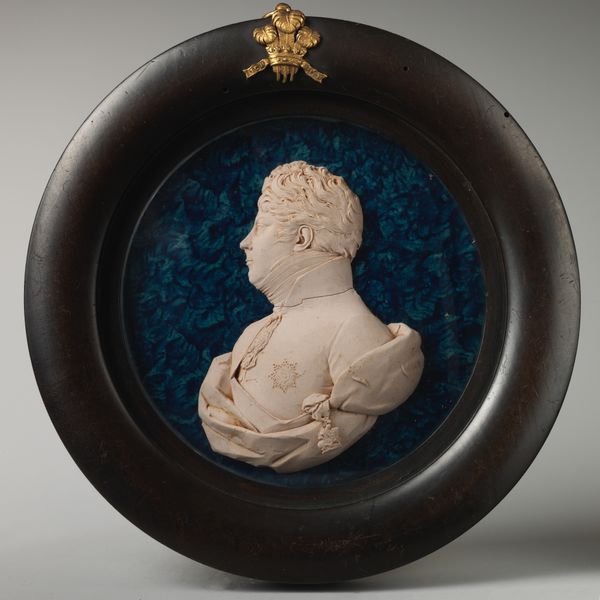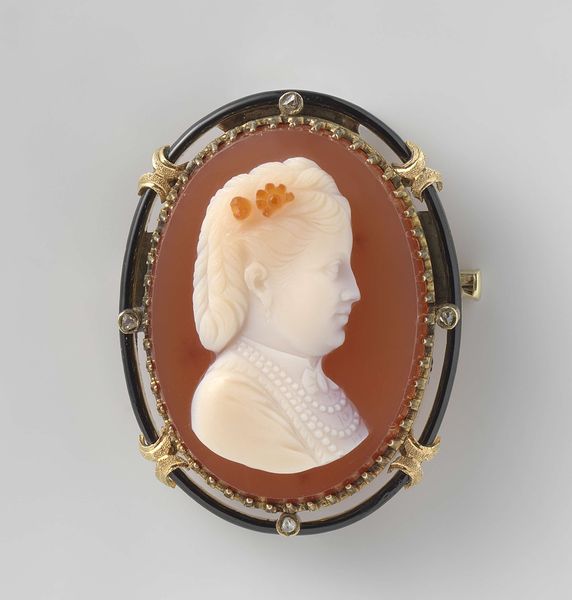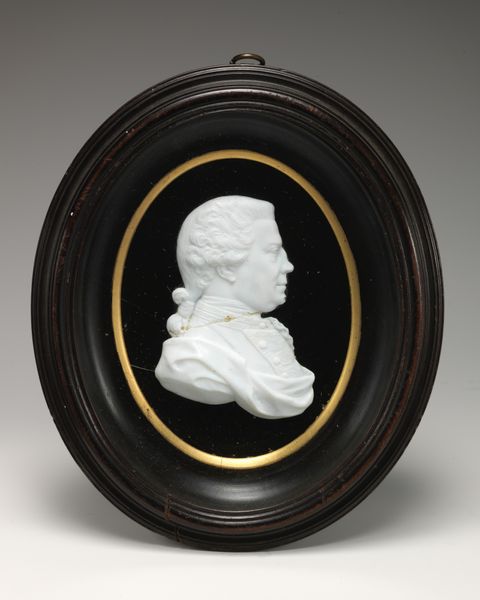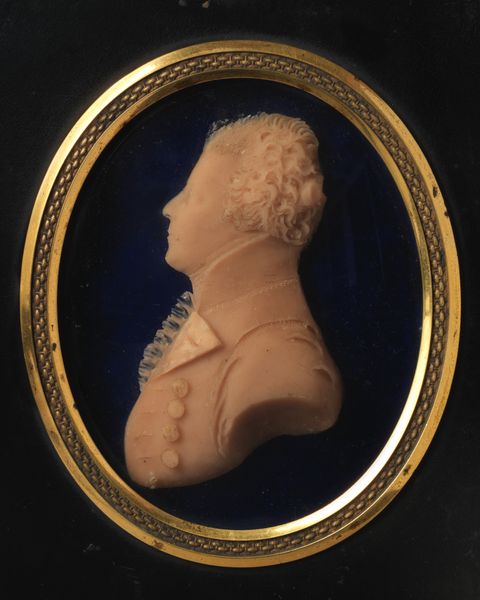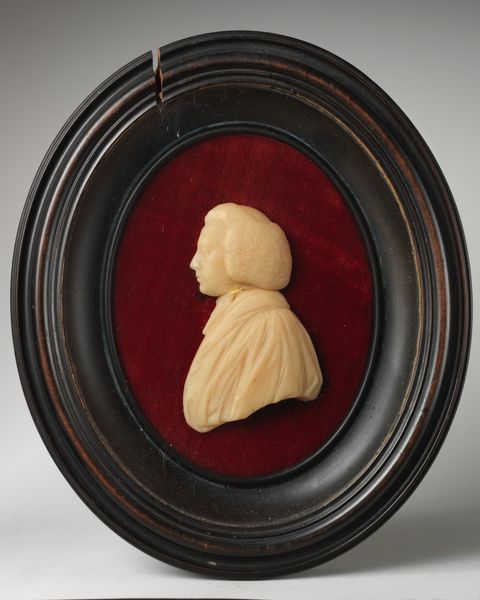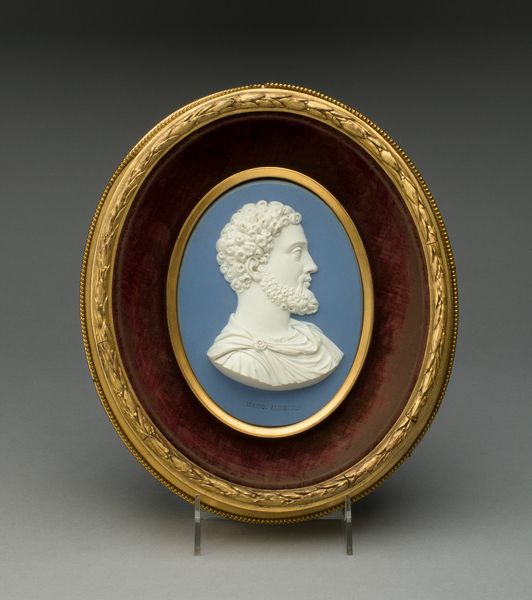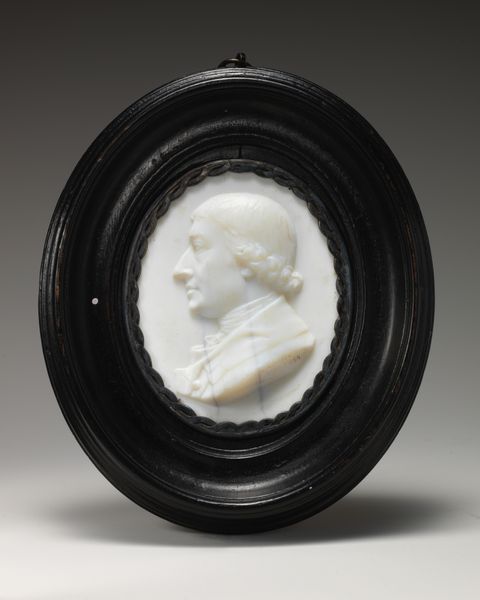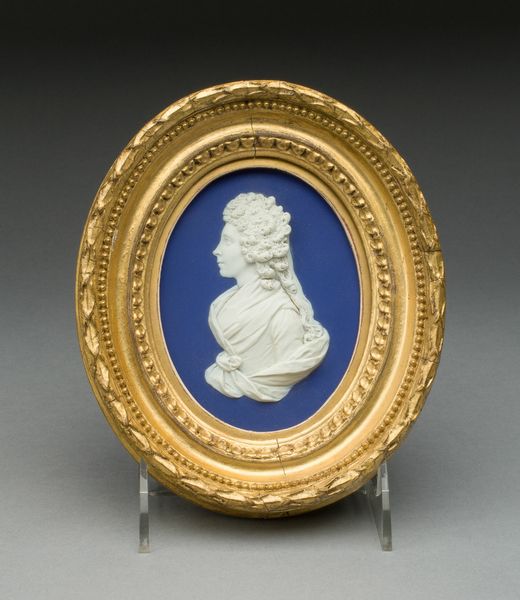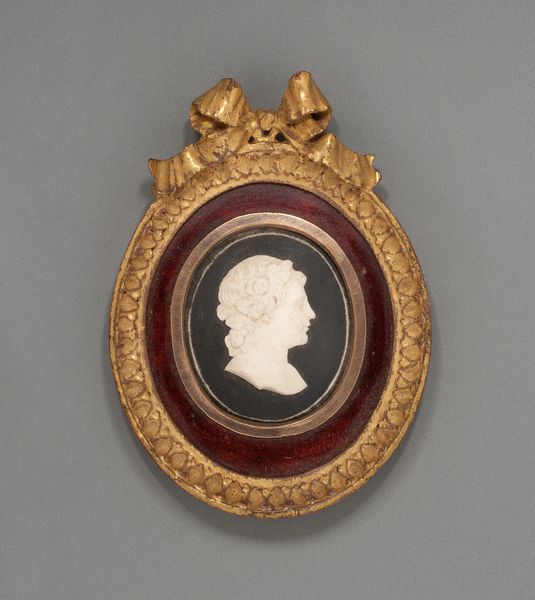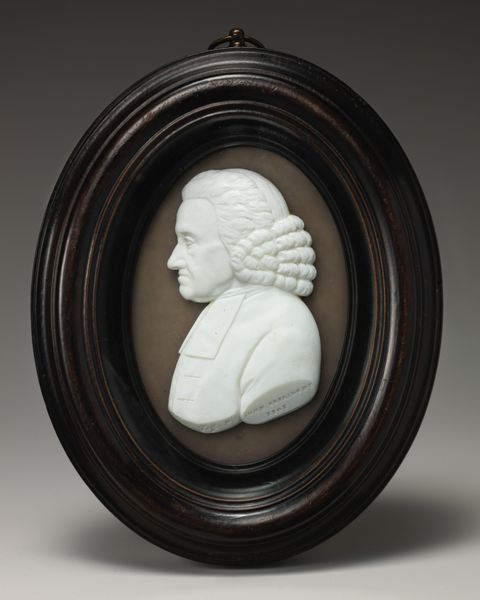
Dimensions: Framed: 6 1/4 × 5 1/4 in. (15.9 × 13.3 cm)
Copyright: Public Domain
Curator: What strikes me immediately is the stark contrast – the pale figure against that black ground. A very pronounced profile! Editor: Yes, quite elegant in its simplicity. This portrait of David Garrick, the celebrated 18th-century actor, was crafted by James Tassie in ceramic during that period. It resides here at the Met. Curator: Ceramic! That feels so different from how we often conceive of commemorative portraiture. I am fascinated by the choice of material – its very ‘ordinariness’ elevating the figure. Editor: Exactly! Tassie was masterful at elevating stoneware and ceramic, mass-produced materials, into objects of refined taste. Neoclassical ideals of simplicity combined with expanding markets. Labor specialization was emerging, even in studios like Tassie's. It invites you to think about its production, doesn't it? Who mixed the paste, fired it? It democratizes the form. Curator: The profile is so sharply defined, so decisive, but it also makes him seem quite detached. A study in idealization typical of neoclassicism? Garrick, as a performer, lived by connecting with his audience, conveying passions… yet here, he's almost austere. Editor: Perhaps, this ceramic image, multiplied through molds, suggests fame in the age of nascent mass production. The material and medium reflect not just neoclassical taste, but changing economies of celebrity, wouldn't you say? Each copy brought Garrick into a different parlor, solidifying his image and expanding his cultural footprint. Curator: It certainly allows for an intimate, enduring quality that surpasses ephemeral stage performances. I suppose the medium lends itself to ideas about legacy, too. The classical world and its stories come down to us through the ages as fragmented shards of fired clay... This simple image evokes thoughts about fame, material culture, and its staying power across time. Editor: It does highlight how art, even "decorative art," can offer layered perspectives into not just its subject but the society in which it was produced. I had never considered this small object so rich.
Comments
No comments
Be the first to comment and join the conversation on the ultimate creative platform.
